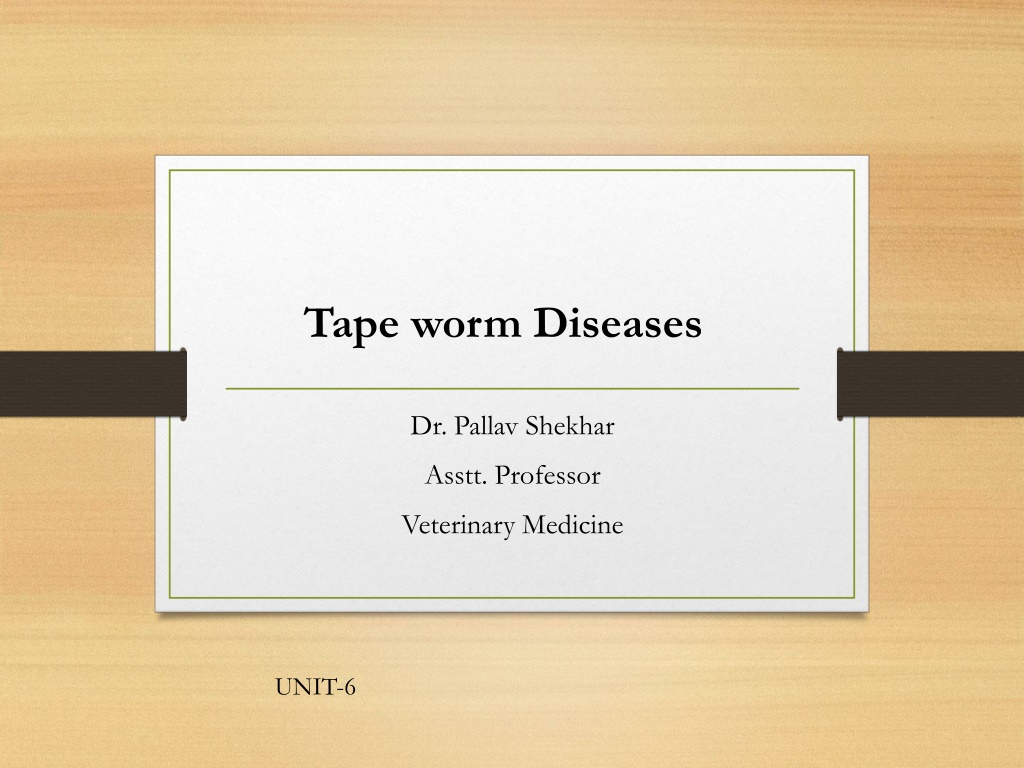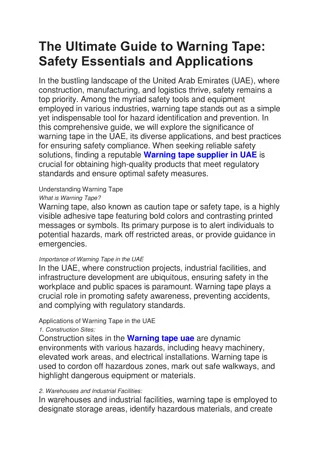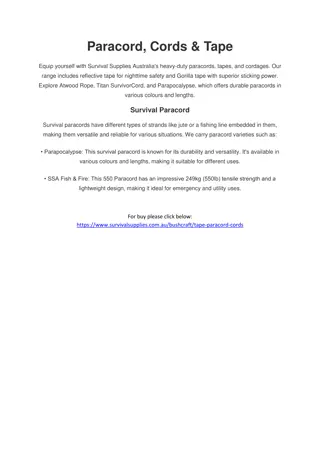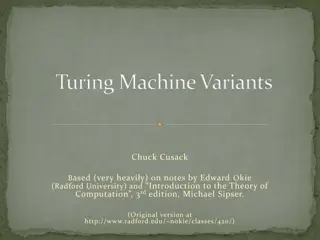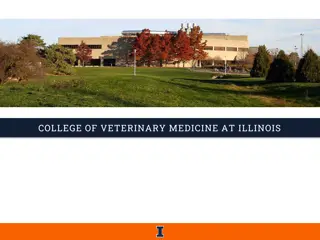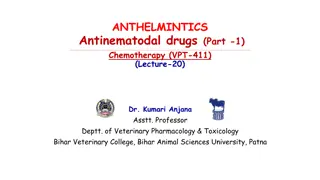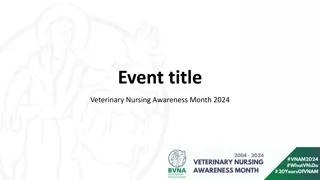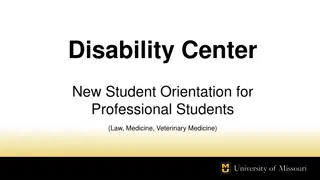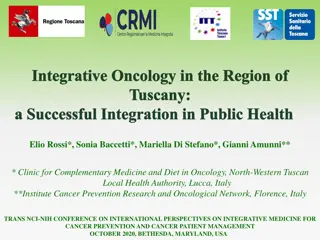Understanding Tape Worm Diseases in Veterinary Medicine
Tape worm diseases, such as cysticercosis and coenurosis, affect various animals like sheep, cattle, horses, dogs, and cats. The pathogenesis involves indirect mechanisms, leading to larval stages like metacestodes. Heavy infections can result in colic, diarrhea, and anemia in animals. Diagnosis involves identifying tape worm segments in feces containing embryos and characteristic structures. Veterinary professionals can recognize and address these diseases to ensure animal health.
Download Presentation

Please find below an Image/Link to download the presentation.
The content on the website is provided AS IS for your information and personal use only. It may not be sold, licensed, or shared on other websites without obtaining consent from the author. Download presentation by click this link. If you encounter any issues during the download, it is possible that the publisher has removed the file from their server.
E N D
Presentation Transcript
Tape worm Diseases Dr. Pallav Shekhar Asstt. Professor Veterinary Medicine UNIT-6
Tape worm disease Cysticercosis/ Coeneurosis Sheep & Goat Moniezia expansa Cattle M. benedeni Anoplocephala magna A. perfoliata Horse Dog & Cat Dipylidium caninum Echinococcus granulosus
Adult worm F/H Larva I/H Site of Predl. T. saginata Man Cystecercous bovis Cattle Muscles (MEASLY BEAF) T. solium Man C. cellulose Pig, Man Muscle (MEASLY PORK) T.multiceps Dog Coenurous cerebralis Sheep & cattle CNS E. Granulosus granulosus Dog & wild canids Hydatid cyst Ruminants, Man, Pig Liver & Lung Dipylidum caninum Dog /cat foxes Cysticercoids Flee & Lice Muscle Moniezia & Anoplocephala Ruminants/Hor ses Metacestodes Mites (Orbatid) Muscles & Liver
Pathogenesis L/C- INDIRECT Tears the mucosa with the help of hook Adult tape worm Active onchosphere Reach Blood Segments and eggs Digest embryosphere Lymphatic system invertebrate Gastric secretion of i/h Ingested by i/h Predilection site
Continued Develop into sp. Larval stage k/a metacestodes Development of chain of proglottids Adult tape worm Metacestodes like Cysticercus,coenurosis, hydatids, cystecercoides etc Attach to mucosa and the remaining parts are digested off Ingested by final host Evaginated scolex
Pathogenesis Pathogenesis depends on tape worm. In heavy infection they compete for nutrient excrete toxic materials or because of their length interfere with motility of the gut. Very heavy infection of Monezia in lambs have been associated with the outbreaks of enterotoxemia. Heavy infection is associated with ilicoecal colic in horses.
Clinical Pathology Not very imp. In ruminants Most infestation asymptomatic But heavy infection, colic, mild diarrhoea, constipation, anaemia. Most evident in animals below 6 months.
Diagnosis Tape worm segments in the feces Roughly D shaped thick shelled and containing embryo within continous ring Eggs contains pair of hooked projection K/a pyriform apparatus
Treatment Cuso4 @ 2gm /day for 10 days Praziquantel @ 3.75mg to 5mg/kg body wt is highly effective against Monezia Horses- Pyrantel ebonate @ 38mg/kg.wt
Echinococcus Granulosus Etiology- E. granulosus Definitive host- Dog and Wild Canids I/H Domestic ruminants, man, pig, wild ruminants
L/C & Pathogenesis Discussed In sheep-70% hydatid cyst occur in lung and 25% in liver In horses and cattle more than 90% of cyst are usually found in liver
Adult tape worm are not pathogenic thousands may be present without any symptoms In Definitive host the hydatid in the liver and lung is tolerated but in man the presence of hydatid in these site are pathogenic Presence of Cyst in the lung produces Respiratory Syndrome and that in Liver by Gross abdominal distention.
Treatment Echinococcus tapeworm are difficult to remove than Taenia however Praziquantel are highly effective. Hydatid cyst can be removed surgically.
thanks 20/5/2020
